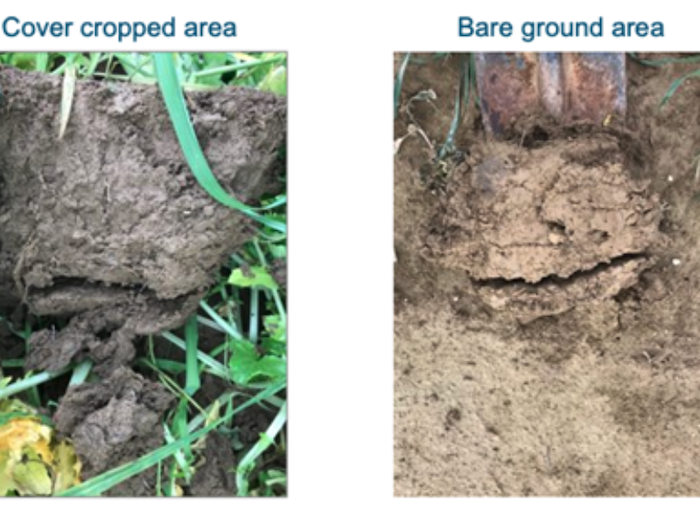Carbon can be stored in soil in many ways. One very important type of soil carbon is organic matter, which is made of decayed materials from living things like plants, animals and microbes.

Research has shown that farm fields that use cover crops between harvest and planting store more carbon. On the left, the soil is darker, indicating more organic matter (carbon) in the soil. On the right, soil that was not covered, and it is lighter due to less carbon in the soil. Credit: Indigo Ag
With a soil carbon credit system, carbon becomes a valued commodity for growers to gain additional revenue. One soil carbon credit represents 1 metric ton of carbon dioxide or an equivalent greenhouse gas emission that has been reduced, avoided, or removed from the atmosphere.
Soil carbon credits are produced through carbon farming – using best practices that are known to hold carbon in the soils. Other practices that may receive credits might reduce nitrous oxide emissions. The practices vary by field but may include reduced tillage or no till, adding cover crops, rotational grazing, diversifying crop rotations, and reduced fertilizer usage.
The new additional practices slow the rate in which carbon is released into the atmosphere and increases the storage of organic carbon in the soil. In a sense, carbon becomes a new crop.
Growers “harvest” this crop through the collection and submission of data and records. They sell them to a new type of market, the carbon market.
To ensure that the soil carbon credits are high-quality and the practices that generate them are environmentally beneficial, the credits must undertake a thorough vetting process. A project developer brings growers together and conducts all data collection and reporting. The project is then brought to a registry, which has established a set of standards for soil carbon projects.
There are even third-party verifiers who ensure the data, methods, and results are accurate. They check that the results adhere to the registry’s standards. Once verified, the registry approves the project results and issues carbon credits that can be sold on a carbon market. Then, other companies, such as a manufacturer, can buy these credits to offset their carbon footprint.







Post a comment
Report Abusive Comment